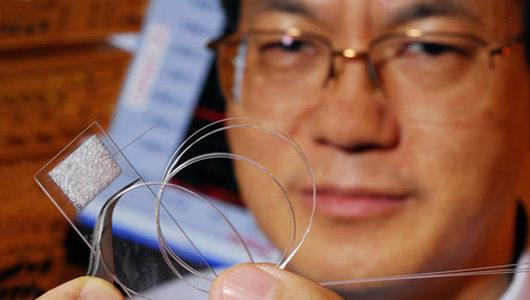
A research team led by Dr. Z.L. Wang, Regents’ Professor in Materials Science and Engineering (MSE), has made a breakthrough for the solar industry by engineering fiber optic solar cells that can work indoors or underground. The new fiber optic solar cells use fiber optics to generate electricity which may potentially replace the traditional solar panels found on roofs.
Why the Name 3D?
Wang’s research group calls it "3D" solar because protons are allowed to move in multiple directions via a bundle of transparent fiber optic cables coated with zinc oxide. The tips of the cable bundle are exposed to direct sunlight, and, as the photons collected moved through the cables, they generate electricity. Then each photon bounces back, allowing the cable to collect additional energy missed in the first pass. The polymer cables are just slightly thicker than human hair but they provide a low-cost method of producing electricity on demand. A single 10 centimeter cable can produce 0.5 volts, and a 10 watt light bulb could be powered by a 10-cm long bundle (equivalent to handful of human hair — 10,000 cables).
3D vs Traditional Solar
While the new technology may not be as efficient as traditional solar panels, they would be easier to produce and contain no silicon. With most of the cable either outside or underground, the cables are protected from outdoor weather means they could be made from cheap plastic or less expensive materials.
Dr. Wang is the founding Director for the Center on Nanoscience and Nanotechnology at Georgia Tech. The July/August issue of the Science Watch published by the Institute of Scientific Information (ISI) lists the world's top 25 researchers and institutions in nanotechnology from 1992-2002,and Wang ranks number 5 internationally.
